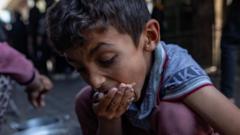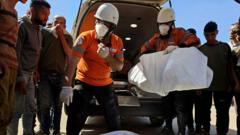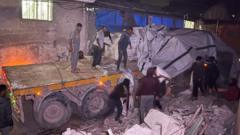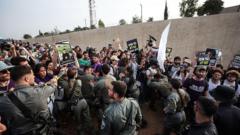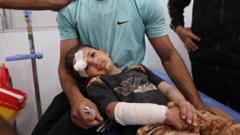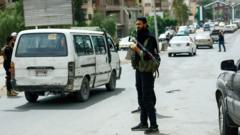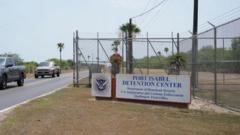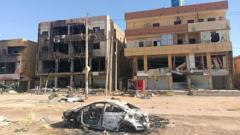Following a devastating 7.7 magnitude earthquake, Mandalay is grappling with colossal destruction and inadequate relief efforts. An undercover BBC report documents the dire conditions faced by survivors as they cope with loss, neglect, and the impact of the military junta's limited response to the disaster.
Desperation in Mandalay: Earthquake Survivors Face Dismal Reality
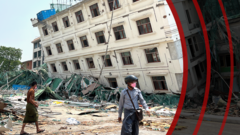
Desperation in Mandalay: Earthquake Survivors Face Dismal Reality
Undercover BBC report reveals devastation in Mandalay following a significant earthquake, highlighting the struggles of survivors and the inadequacies of rescue efforts amid ongoing political turmoil.
Driving through Mandalay after the devastating earthquake, the scale of destruction becomes painfully clear. Many streets reveal buildings reduced to rubble and others cracked and unsafe. The city's main hospital struggles to treat patients outdoors amid rampant devastation.
Foreign journalists face significant challenges under Myanmar’s military government, which has restricted foreign access. An undercover report reveals a population grappling with insufficient support amidst rampant despair.
Families like Nan Sin Hein’s are scarred by personal loss as they wait in hopeless anticipation for loved ones trapped beneath the rubble. Her son, 21-year-old Sai Han Pha, was working at a collapsed five-storey building when the earthquake struck. The situation remains critical, with rescue efforts delayed, largely due to political upheaval that has kept the military overstretched amidst a civil conflict displacing millions.
International aid faces hurdles due to strained diplomatic relations, with assertions of assistance primarily coming from India, China, and Russia. Survivors are languishing with scant support as many rescue operations focus on high-casualty sites, like the Sky Villa condominium and a Buddhist academy that was housing hundreds of monks at the time of the quake.
As rescuers tackle grueling conditions to find victims, harsh realities confront families awaiting news. The stench of decay permeates the air as bodies are recovered under extreme heat. Amid this grim backdrop, families are left in anguish, their hopes dwindling with each unsuccessful recovery effort.
Historical sites, including the iconic Mandalay Palace and Maha Muni Pagoda, also bear the brunt of the disaster, leaving locals mourning their cultural heritage. Nearby, funeral rites unfold for those lost, with some bodies retrieved by locals using basic tools.
The official death toll stands at 2,886, yet many believe this is an undercount, as various collapse sites remain unexamined. Parks and public spaces morph into makeshift shelters, with thousands now sleeping outside in fear of aftershocks, which continue to rattle the region.
Survivors like 72-year-old Daw Khin Saw Myint share gut-wrenching stories of loss while seeking basic necessities, such as food and water. The lack of organized relief means that aid is often sporadic and insufficient, pushing many to resort to desperate measures.
The capacity of hospitals diminishes under the surge of casualties, as families try to provide care in the absence of medical staff. With the clock ticking on the rescue operations, hope dwindles, leaving families to grapple with the harsh possibility that they may never see their loved ones again.
Amid the catastrophic conditions, the collective anguish of Mandalay's residents reflects not only personal tragedies but also the broader struggle of a city in turmoil, bound by the chains of despair, loss, and the quest for survival.

